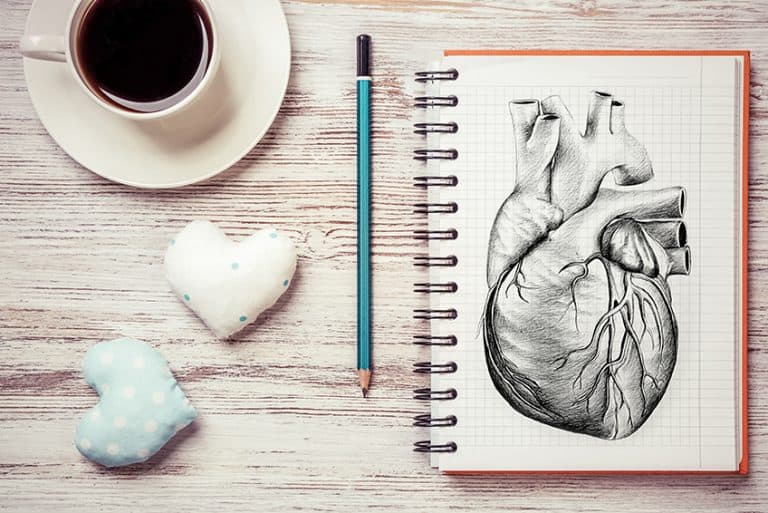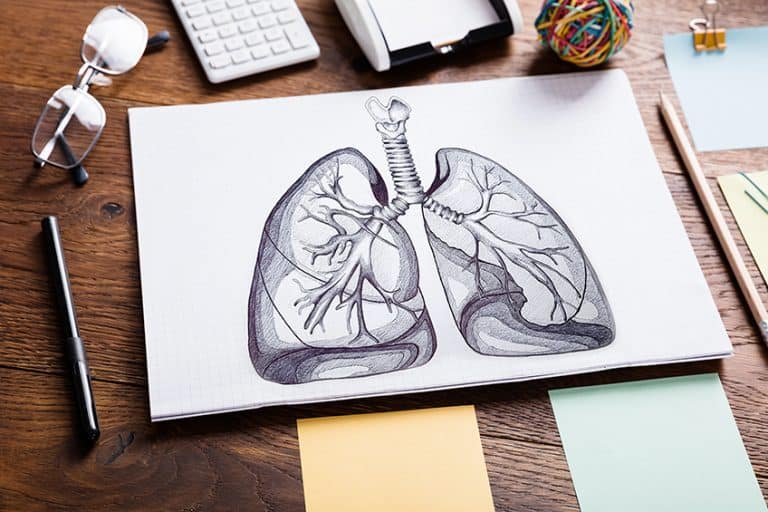How to Make a Character Design Sheet – A Beginner’s Guide
Learning how to make a character design sheet is a great way to explore the unique qualities of your character design. Creating a character in detail requires us to understand the movements and dimensions of the character seen from various angles. This can give us a more comprehensive understanding of how the character is seen in their reality and how they maneuver through their universe. It’s also a fun opportunity to explore quirky attributes that are unique to the character, and how to represent them from various angles. There is a lot to learn from a character expression sheet, providing us with an understanding of design and perspective!
Step-by-Step Guide on How to Create a Character Sheet
In this tutorial on how to make a character sheet, we will explore three main aspects of the creative process. We will first look at how to develop the profile of the character, where we explore the facial structure in a character expression sheet. From there we will look at the full body design, exploring the unique shape and style in the character’s proportions. This will lead us into the last stage where we explore outfits and ensembles within the model sheet.
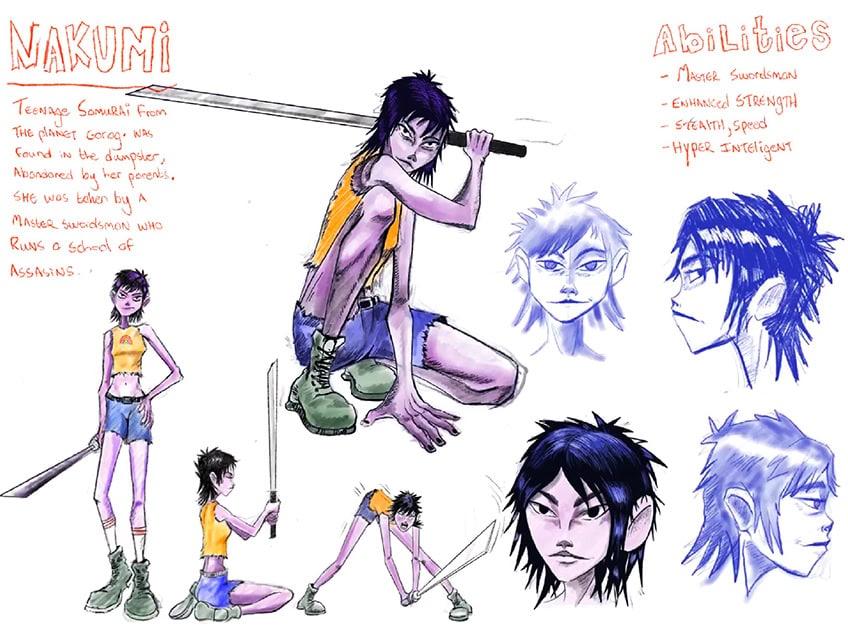
Developing the Profile of a Character Design
We can start by thinking about the basic profile of the character, this is where we can play around with storytelling.

We want to have some sort of context for our characters and how their features define their story.

This identity of the character can be whatever you like. This allows you to explore unique attributes of the character that can make them more animal-like or seemingly from another planet.

We can also explore their identity as either more masculine or feminine, however, to create a concept sheet, we need to first understand their basic profile through a character expression sheet.

Starting with a front view of the face is always a great way to define the general features of the character. However, it’s also important to start exploring other sides of the character for a better three-dimensional understanding of their face.

Working on other sides of the face helps us to understand how the character can be seen from various directions that will contextualize them further.

Exploring different profiles in a character expression sheet also sets us up for a more consistent representation of their features when drawing them in unique poses later on.

It also helps us to understand how the features are scaled differently, for instance, how large the nose, mouth, and head should be compared to one another.

It also gives us a challenge to explore different expressions in the face from different directions.

As we slowly construct the profile from different angles, we can then simultaneously explore different expressions that may suit the character.
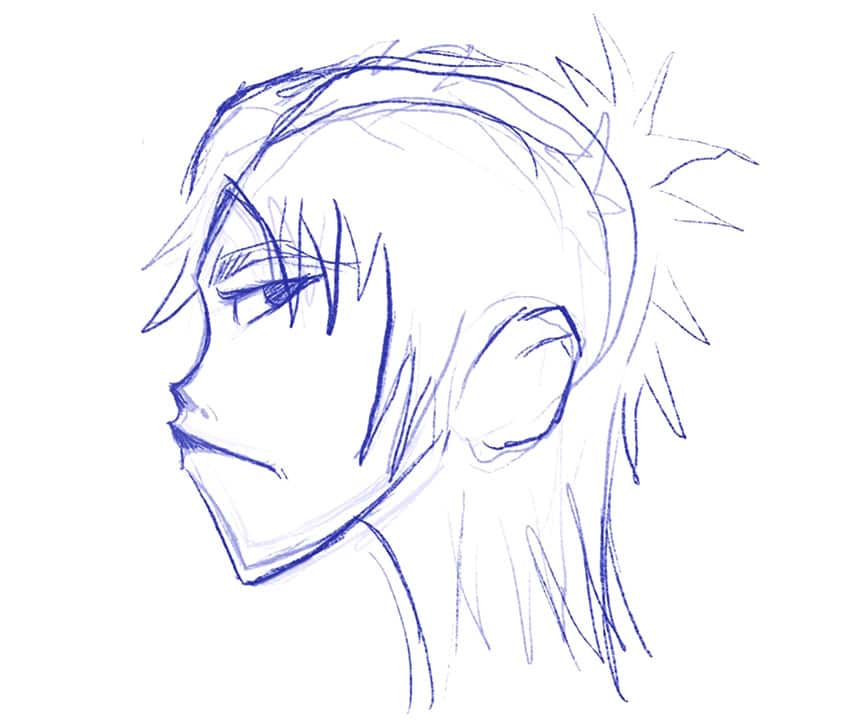
The narrative of the characters is really important and plays a large role in the representation of their features. This is where we consider the personality of the character. In many ways we are defining the character through the profile, so we need to consider how their facial features, hairstyle, and species serve their narrative.

With a character sheet, we essentially tell a character’s story as we slowly build the character through some simple sketches.

As we define the character from various angles, we will get more comfortable with how their features represent their personality.

The more preliminary sketches we make as we create a model sheet, the more consistent we will become with defining their features in the same way from different angles. As we work on these profile sketches within our model sheet, we can keep key features the same each time. This is where we consider unique attributes, like the mouth, eye shape, hairstyle, and so on.

The more we work on these different facial angles, the more confident we become with the character. As long as we maintain their unique attributes, we will find consistency in the character profile.

Once you have developed some basic sketches, we can start exploring color values and how this might work as a unique set of features for the character. Again, we are developing a story for the character, so they can be any figure, from any planet and colored in any way.
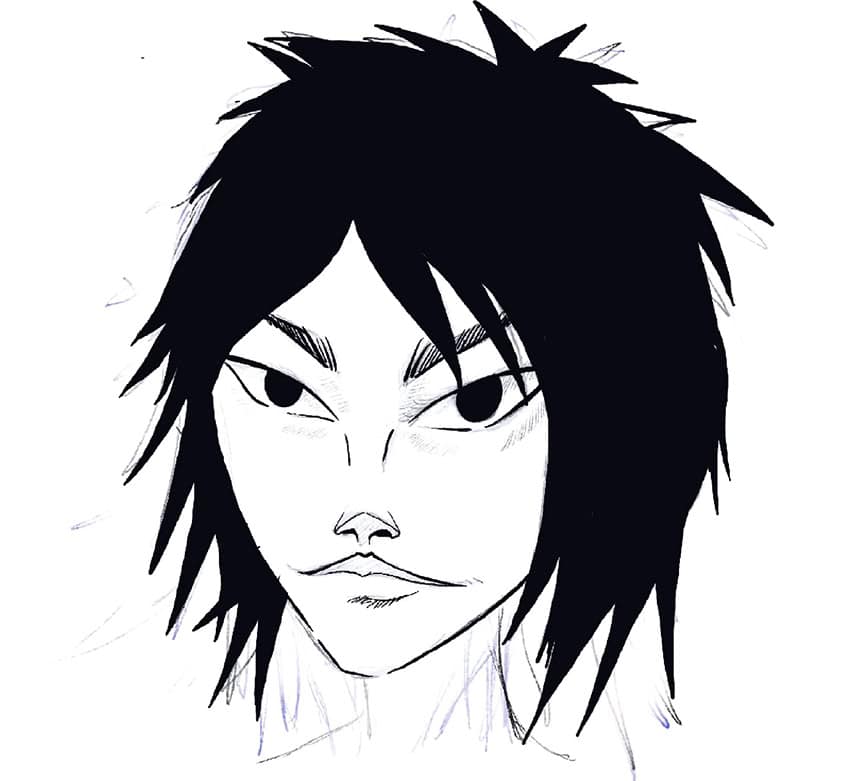
This is where we can have a lot of fun as well with defining the character in unique ways through the use of colors.

We can also consider making their skin tone color unique to represent a more foreign species from a different planet. Again, what is the story and origin of the character? We want to be thinking about this as we develop the character through some simple profile sketches.

Remember to give yourself time and explore some references on the internet for inspiration as you develop a unique character model sheet.
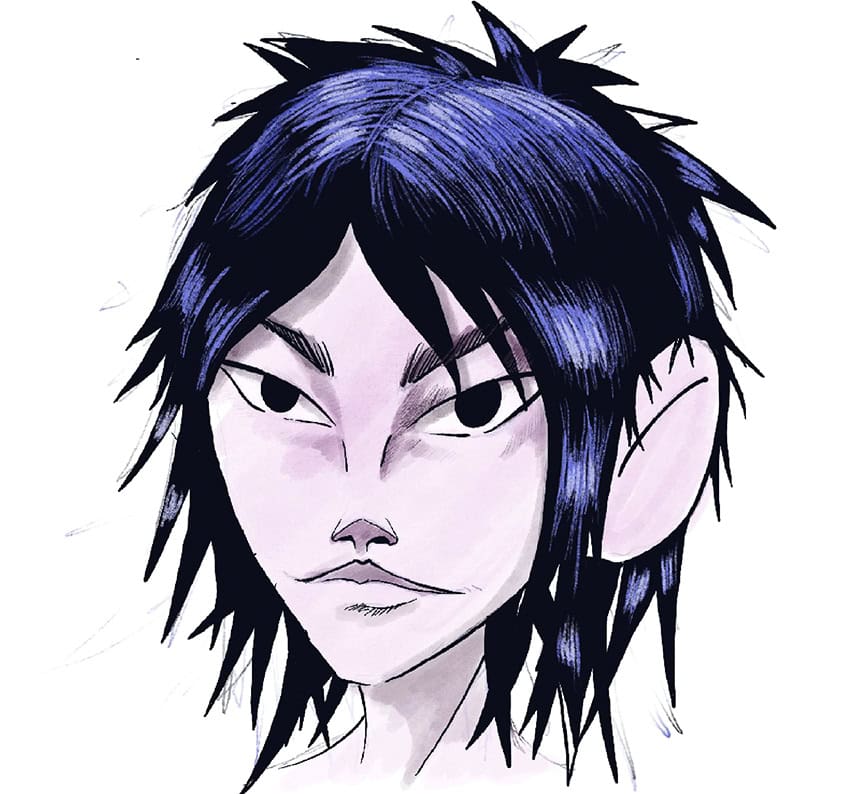
Developing the Physique of the Character
Once we have established a set of sketches that define the profile of the character, it is important to now define the character in a full physical form. Again, we can start simply with basic sketches as we learn how to draw character for the first time.

We can also consider what art style works with the character. This also allows us to see their full form and what qualities may be unique to their personality and story.

It’s all about the story of the character, and how the visual qualities serve their story. Are they samurai? Are they a merchant selling goods? There are many paths to choose for your character and how their physique and attire can serve the story. As you work with simple sketches, we can also explore unique poses in the character design. By working on different poses, it also helps to represent their personality by the use of body language.
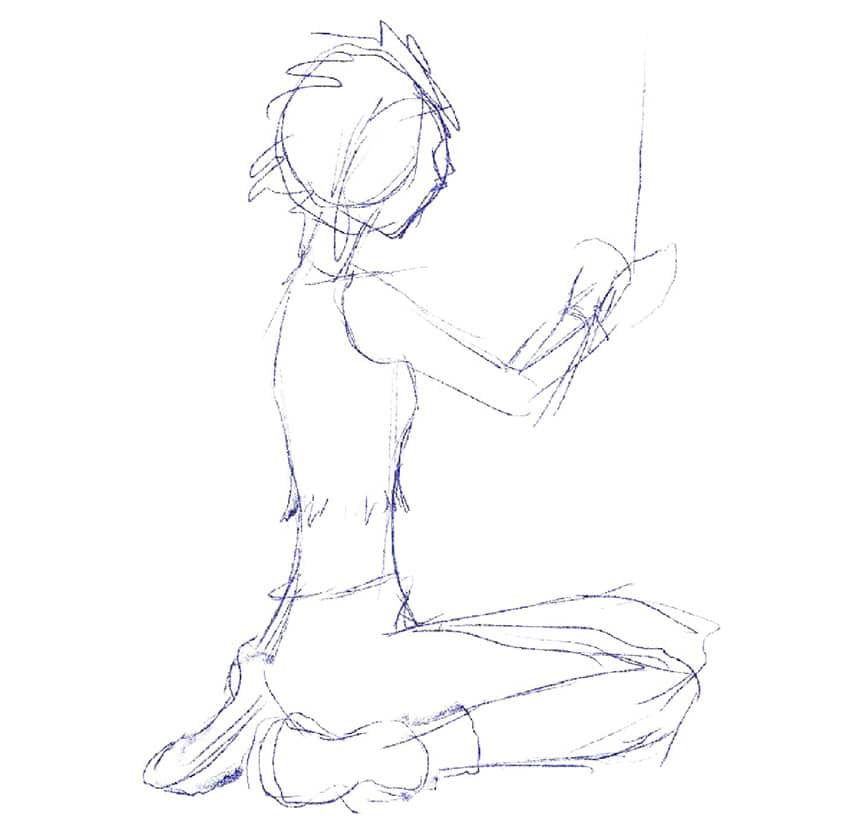
We can now begin to pair the profile of the character with their body in different positions. This will help us to explore aspects of their personality. We want to consider how the character can have many aspects to their personality, which we can only define through their body language.

The more variation we explore in personality, the more fleshed-out the personality of the character will become.

As we get more comfortable with the physique of the character design, we can start exploring how the character can be represented in more unique poses.

As you explore unique positions in the character design, you always need to question yourself about how the pose or movements in the character suit their narrative.

In the case of the example before you, we are defining a samurai character. This means it’s worthwhile to explore dynamic poses as she fights with her sword.

This concept of movement and how it suits the character is something you want to apply to your unique character design.

This also challenges our understanding of how to represent their unique attire and features in unique positions.

Once again, we can’t start further contextualizing the character’s identity with color exploration. Naturally, the clothing they wear and how it suits the character can be emphasized with the right color choice. This allows us to refine the character design through color combinations and how it may serve the style of clothing.

As we bring color into a fully fleshed-out character we see how it starts to all work together. Simply by the color and style of their clothing, can change the whole persona of the character.

We start to see how these various elements can also work as a balancing act between the physical attributes and the attire and accessories.

We are developing more depth in the characters by considering their narrative, and how it is represented in the combination of facial features, physique, clothing, and so on.
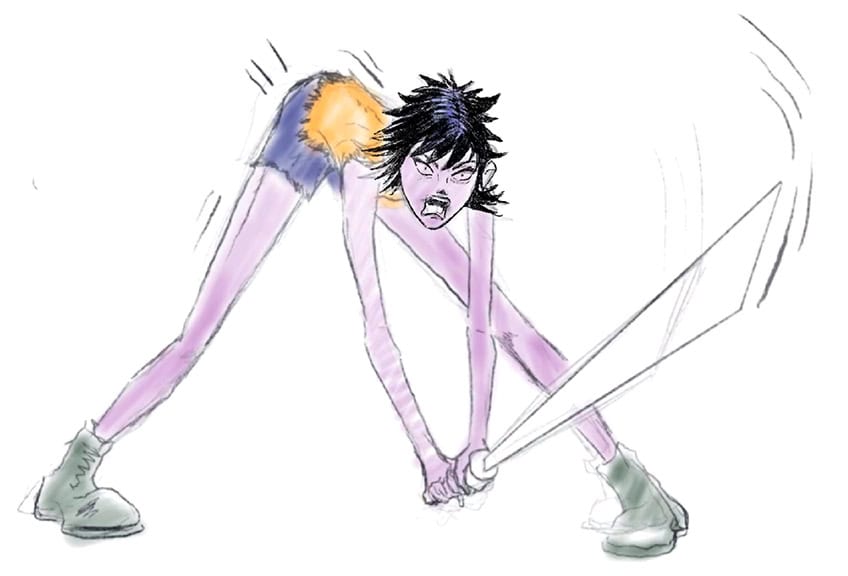
This allows the character to be seen as a figure with a diverse personality that can shift between various emotions and states of being.

Again, the more you explore your character in various angles, poses, and expressions, the more the character will be seen beyond two dimensions.
Developing a Finalized Drawing of the Character Design
At this point, we should be quite comfortable with the dimensions, shape, profile, and physique of the character. Once you know the main key aspects of the character design, a good idea is to create a refined drawing of the character.

This is a really fun challenge to explore unique poses that define the main themes and narrative behind the design of your character sheet. Again, it’s always best to start with a simple sketch, slowly shaping the characters in their general proportions.

As we continue, we can then start to refine the sketch into more unique features that are specific to the character. This is where we consider their physical traits and how to best represent them. This is also an opportunity to define the details, where you enhance all the specific attributes of the character. This can be from facial features to outfit details.

We can also consider what type of lifestyle and art style works with the representation of the character design.

As we continue to develop the character design, A good idea is to also remain consistent with your art-style choice for a more cohesive character design. Knowing the color scheme of the character design, we can now integrate color more confidently. For a more detailed representation, we can build up our colors with lighter tonal values at first.

By doing this, we will find that we have more control over the coloring process and how to then define the tonal variations in skin tone and shadows within the clothing.

Then lastly, you can put all these different sketches into a single sheet, with some text that explores more aspects of their identity and story. Collectively, this is a great way to finalize your character model sheet.

And there you have it! There are many concepts to consider when considering how to make a character sheet. Again, there are many ways to make a character sheet, however, this tutorial demonstrates three helpful concepts to consider.
Tips and Tricks to Remember
- First, explore the story. You want to have a general narrative that leads your design as you learn how to make a character design sheet.
- Start simple with a profile. Always start with a simple set of sketches, getting a basic sense of the shape and scale of the character’s profile.
- Explore unique body proportions to suit the character’s story. We want to consider their physique and how it suits their narrative.
- Experiment with outfits and devices. The attire and accessories play a large role in contextualizing the character’s personality.

Learning how to make a character design sheet is fun because it’s all just playful experimentation. This means that we can mess around with unique attributes, species, identity, and many other features unique to our character design. There is a lot to learn through creating a character concept sheet, such as coloring, sketching, perspective, and general character design!
Frequently Asked Questions
How to Draw a Head in Various Angles?
When you learn how to draw a character, you want to start simple with a front-view profile sketch, as this allows you to explore the features of the character simply. Once you know the basic features of the character, you can then move into other simple profile angles, such as the side profiles. This allows you to consider the front profile features and how they may be represented from the sides. We can ask ourselves questions like, what hairstyle does the character have? or what is the shape of their nose and mouth? Asking yourself questions like this can help you to form the face from various angles. It’s also good to keep your sketches very simple at first, and once you become more comfortable with the basic design, you can explore unique angles and color pairings in the character design.
What Is Important in a Character Sheet?
There are many ways to make a character sheet, and this can be from simple profile drawings to fully fleshed-out diagrammatic representations of their bodily proportions. However, there are three main concepts worth considering. Firstly, we want to understand the profile of the characters to gain a basic understanding of their features. This means we can develop a set of simple sketches of the facial structure, and then slowly start to explore unique angles to gain a three-dimensional understanding of the character. From there, we can move into exploring the physique as a way of contextualizing their profile. Again, we can start simple with basic proportions and easy poses. As we gain confidence in understanding their unique body, we can explore unique poses and how they are defined through their clothing and accessories. However, the most important theme that assists us in all of these drawing processes is their narrative and how that determines the visual quality of the character model sheet.
Matthew Matthysen is an educated multidisciplinary artist and illustrator. He successfully completed his art degree at the University of Witwatersrand in South Africa, majoring in art history and contemporary drawing. The focus of his thesis was to explore the philosophical implications of the macro and micro-universe on the human experience. Matthew uses diverse media, such as written and hands-on components, to explore various approaches that are on the border between philosophy and science.
Matthew organized various exhibitions before and during his years as a student and is still passionate about doing so today. He currently works as a freelance artist and writer in various fields. He also has a permanent position at a renowned online gallery (ArtGazette) where he produces various works on commission. As a freelance artist, he creates several series and successfully sells them to galleries and collectors. He loves to use his work and skills in various fields of interest.
Matthew has been creating drawing and painting tutorials since the relaunch in 2020. Through his involvement with artincontext.org, he has been able to deepen his knowledge of various painting mediums. For example, watercolor techniques, calligraphy and lately digital drawing, which is becoming more and more popular.
Learn more about Matthew Matthysen and the Art in Context Team.



